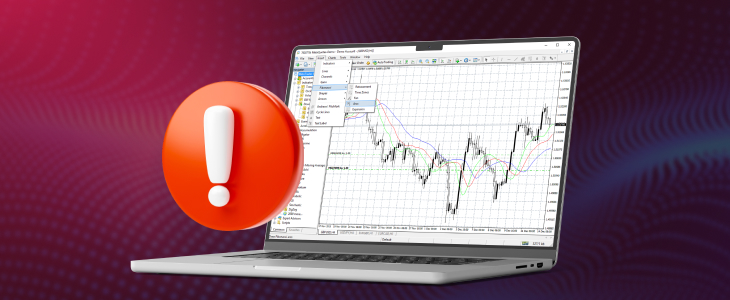As we all know, the forex trading market is one of the most volatile and liquid commercial platforms you will come across. Although there are many bright sides that most people see in this market, you might also face significant losses. Moreover, the dynamic hedging procedure will help you to regulate these losses in the forex market.
Following the forex market’s volatile nature, the market participants can often face severe losses when the currency pairs fluctuate. However, the dynamic hedging in forex will help you to prevent this scenario and can perform as an excellent risk-management strategy.
In this article, we will talk about the dynamic hedging process and how you can manage your risks with it.
How Do You Define Dynamic Hedging?
In the forex market, traders might confuse the dynamic hedging with the conventional one. However, this procedure is more adaptive to market scenarios and can manage your risks more efficiently. Moreover, this indicates a process that constantly regulates a hedge to preserve a preferred intensity of risk exposure.
Moreover, in forex trading, this scenario suggests a readjusted position as a reaction to exchange rate fluctuations to secure against probable losses. Furthermore, you can also implement dynamic hedging in CFD trading.
The Significance of Dynamic Hedging in Forex
There are numerous factors that impact the forex prices. For example, these factors include central bank regulations, interest rate differences, intergovernmental tensions and many more. Moreover, these are factors that are responsible for making the forex market immensely volatile and incalculable.
For instance, an international company that generates its revenue in different currencies has a chance of
facing large losses. Moreover, this happens mostly because of the unpredictable devaluation of the international currency.
Nonetheless, the dynamic hedging strategy can help the company prevent this risk by adjusting the hedge that relies on concurrent exposure. Similarly, in the forex platform, traders who use excessive leverage have a chance to face substantial risks.
Moreover, dynamic hedging can help traders restrict the downside risks while also giving them an opportunity for potential profits.

How Does The Dynamic Hedging Operate in Forex?
It does not matter if you are using a forex trading platform like the MetaTrader 4; you can also implement the dynamic hedging strategy for trading. However, there are a few steps that you will have to maintain, like:
Detecting Exposure
The initial step for you is to examine the recent forex exposure in the market. For example, this can be an upcoming revenue or cost in the international currency for a company. However, when you are a trader, you can initiate positions with currency pairs.
Setting Risk Levels
As a forex trader, you have to describe your risk voracity. For example, you have to decide the amount of exposure you need to hedge alongside the interval maintenance you will set there. For instance, this can be for every hour or on a daily basis when you experience volatility in the market.
Selecting Hedging Devices
There are several hedging devices you can select for your trading, for instance:
- Forward Contracts: This can help you secure a rate for an upcoming trade.
- CFDs: Retail traders mainly use the Contract for Difference for an adaptive hedging process.
- Spot Forex Positions: These positions assist you in taking offsetting exchanges.
Implementing Dynamic Accommodations
If the forex market progresses, you will have to update your hedging process. For example:
- When the USD currency tightens and you have the EUR/USD pair, you will need to enhance your hedging against the US dollar.
- If there is high volatility in the market, you have to strengthen your hedging strategy to protect yourself against the volatility movements.
- Moreover, if the basic market exposure fluctuates, for instance, in new contracts of an international currency, you have to regulate your hedging position.

Several Advantages of Dynamic Hedging
Dynamic Hedging can be profitable for forex traders in many ways. For instance, here are some points:
Adaptive Risk-Management
Unlike the conventional hedging process, dynamic hedging can adapt to market fluctuations. Moreover, this is a major scenario in the forex market as shifts might occur increasingly because of the unforeseen news or policy alterations.
Optimized Profit Probability
The dynamic hedging process can conserve asset benefits. For example, if your hedging strategy becomes unnecessary for beneficial market changes, you can remove or scale back the hedging strategy.
Optimized Capital Effectiveness
If you adjust your positions concurrently, dynamic hedging procedure can neglect excessive-hedging or under-hedging. Furthermore, it makes sure a better usage of margin alongside the capital availablity.
Downsides And Restrictions of Dynamic Hedging
The following are many advantages that come along with dynamic hedging; there are several downsides and restrictions you should consider. For instance:
Complications
You need to have a robust understanding of the market, concurrent data, and advanced models. Furthermore, it makesit very difficult for new traders to comprehend.
Recurring Adjustments
Dynamic hedging will require you to constantly observe the process and adjust your tactics. Moreover, the whole process can be very time-consuming.
Transaction Charges
As you often need to readjust your positions, this might lead the platform to charge you a high fee alongside the forex slippage and spreads which can drain your profits.
In Conclusion
Dynamic hedging is definitely an excellent alternative to the conventional hedging strategy in the forex market. However, it also serves as an excellent risk-management device that offers various facilities. Moreover, these facilities include flexibility, adjustments, and concurrent security against the volatile currency. Also, if you are looking for an efficient trading medium, you can refer to online trading for your trading operations.
There are a lot of trading facilities out there but the FXcess platform is one of the most reliable sources you can come across. For instance, we offer traders reliable brokers and trading platforms. Alongside this, we can also provide you with IB rewards and instant withdrawals.
FAQs
1. How can hedging assist in mitigating foreign exchange risk?
– Hedging mitigates probable losses in forex unfavorable currency fluctuations by taking positions that balance the actual exposure.
2. What is the operating function of dynamic hedging in forex?
– The dynamic hedging procedure consists of constant adjustment of hedge positions following market fluctuations.
3. How can hedging lower risk in trading?
– Hedging lowers risk in trading by balancing probable losses in a single investment while gaining in another.
4. How can you alleviate foreign exchange risk?
– You can alleviate foreign exchange risk by using methods like hedging, forward contracts, etc.
Disclaimer:
This information is not considered as investment advice or an investment recommendation, but instead a marketing communication. FXCess is not responsible for any data or information provided by third parties referenced, or hyperlinked, in this communication.
